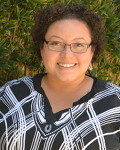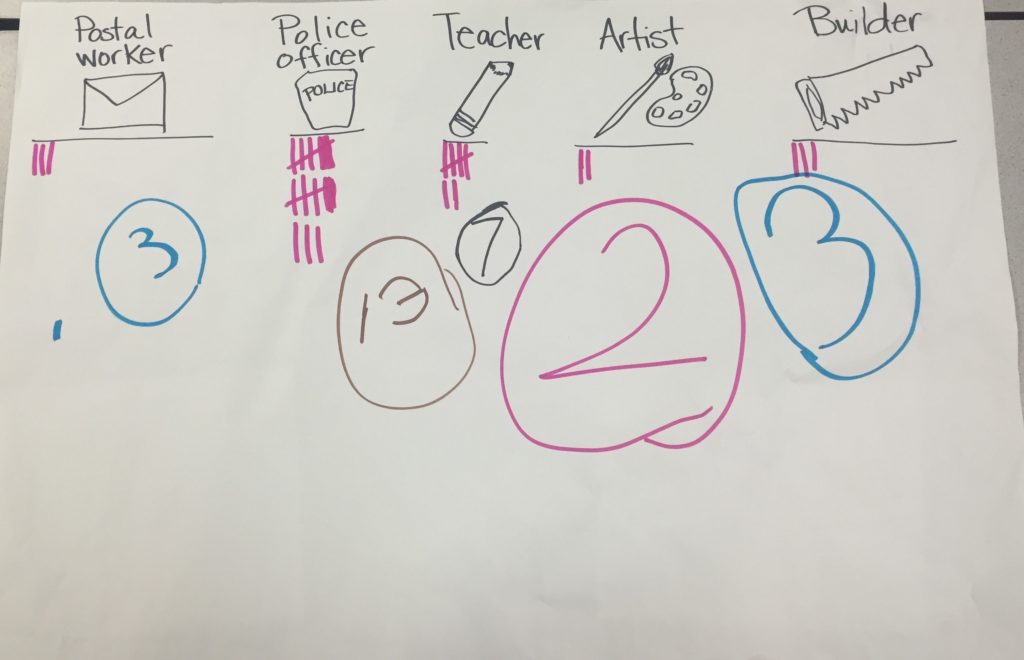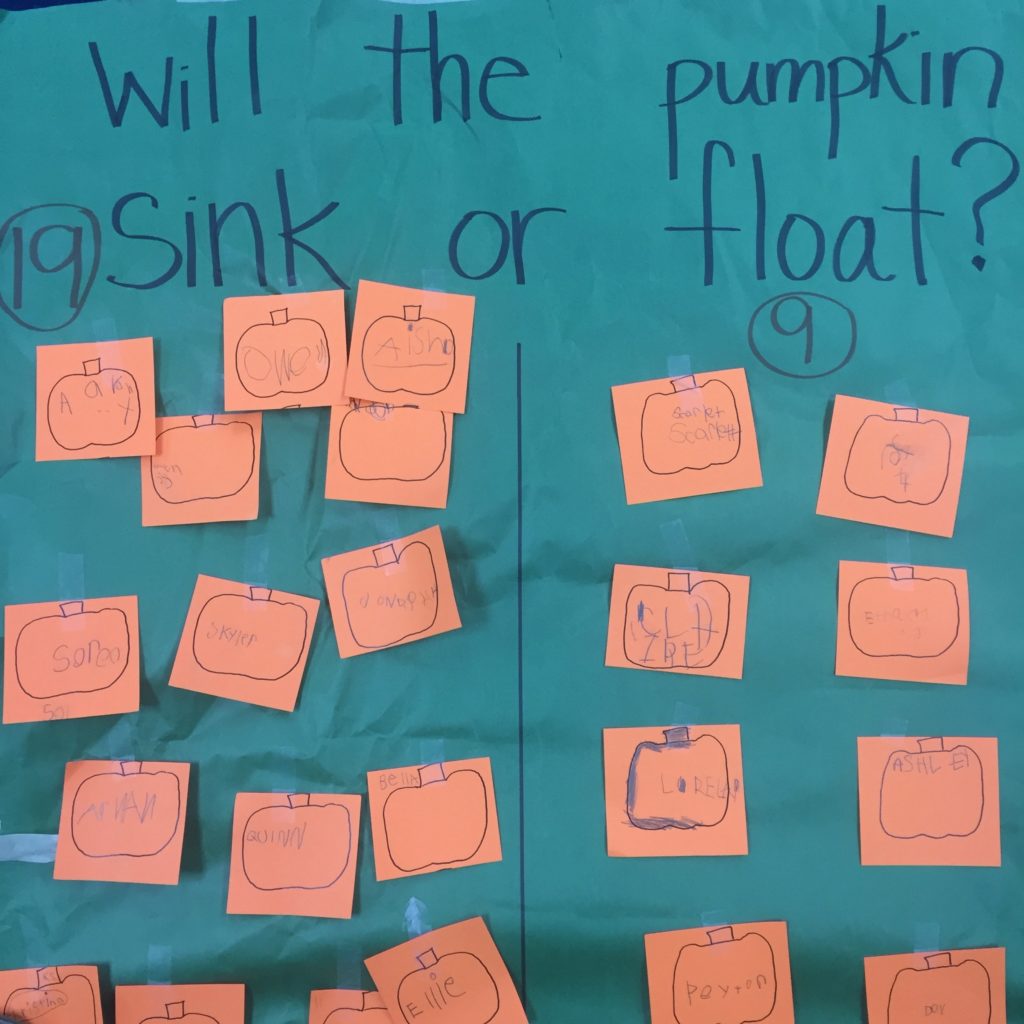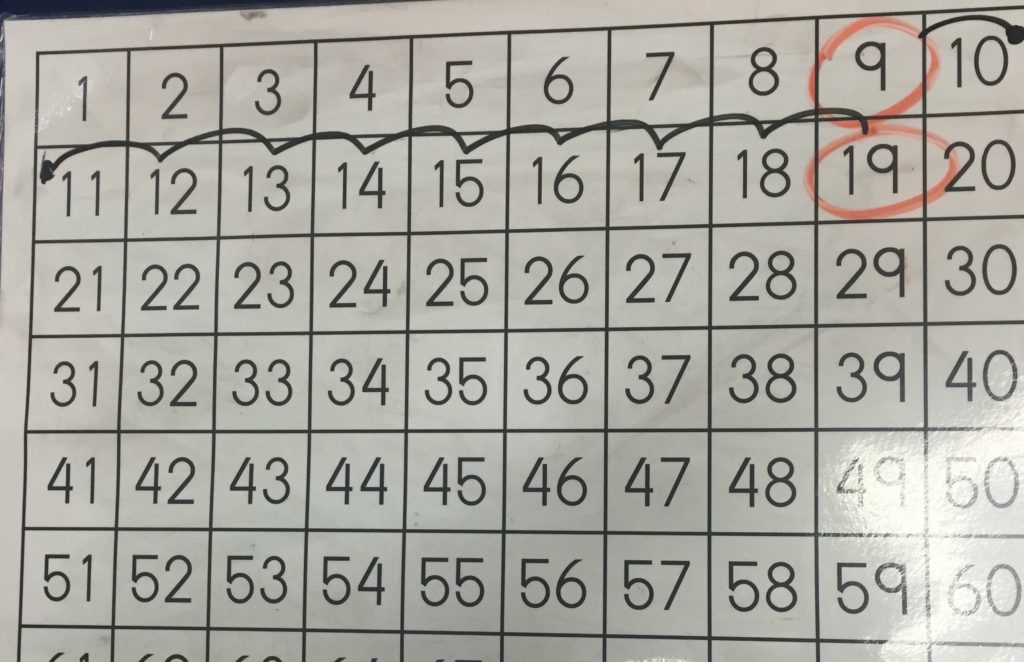I rely on routines in nearly every aspect of my Kindergarten class. Routines extend beyond lining up for recess and passing out papers; subject-specific routines are also an important part of our day. In my last blog post I talked about the way I looked at the Everyday Math Routines of Number of the Day and Attendance, and how I use these small Routines to build a greater understanding of the Major Work of the Grade. In this post I will talk about how I incorporate the Everyday Math Routines of Daily Schedule and Monthly Calendar; Weather and Temperature Observation, and Survey.
Daily Schedule and Monthly Calendar
Everyday Math includes a table with the correlation between Routines, lessons, and the standards. The daily schedule and calendar Routine is definitely listed as correlated with Major Work, including counting, counting on from a given number, writing numbers, compose and decompose numbers, etc. But for me, it felt over-identified with a multitude of standards. Instead of trying to hit too many standards with this Routine, and thereby having it take up more time than I wanted to devote to it, I specifically pick which elements I want to include.
This Routine includes several elements:
- Sequencing and ordering a daily schedule
- Building questions around elements of the monthly calendar
- Incorporating elements of clocks and time
Because beginning to tell time is a first grade standard, I do not incorporate this into my day – it’s important to stay focused on the key skills that need to be built in Kindergarten. Perhaps at the end of the year, in preparation for first grade, I may introduce more elements of the clock. But for now, my schedule includes picture cards and students quickly learned the sequence for daily activities. They are eager to remind me when I have forgotten an element or when there is a change in our daily routine.
My favorite part of this Routine comes once a month when we dismantle the calendar. Students help to take down the calendar at the end of the month by responding to prompts such as: remove the number before 10; remove all of the numbers that are between 7 and 14; remove the numbers that have a 3 in it; remove the number that equals 2+3. The students love being number detectives!
Weather and Temperature Observation
This is the routine I use the least. We did record weather for the month of October as part of a science unit. Admittedly, it was a bit anticlimactic since I teach in Southern California, so there was a lot of “is today warm and sunny, or sunny and warm?” I am thinking I might need to Skype with an east coast classroom to help us talk about winter! (any takers?)
One element of this Routine I really appreciate is the introduction of the thermometer. The students practice finding numbers on the thermometer, connecting to our work with the number line — both a growing number line we add to each day, and the number line as a tool for counting and problem solving.
Survey
This Routine invites students to collect, record, display, and discuss data. The key with this Routine was leaving time to count and compare the numbers for each response. It is easy to spend the whole time collecting responses or creating a graph. Since graphing is not a standard in Kindergarten, I want the focus to be on organizing the data in order to count and answer “how many?” questions, both Major Work in Kindergarten.
Most times we conduct a survey, I pose the question to the students at the start of the day and they will place a sticker, a dot, or a tally mark on the chart as they are unpacking and getting settled for the day. This keeps the data collection quick and efficient. I pull the chart back out during math time to count the results together. By reusing the same collected data over multiple days, the students are able to build connections and spend more time doing Major Work with data that is familiar to them and connected to a real-world problem.
My favorite survey so far was during October. We did a pumpkin investigation that included a prediction about whether the pumpkin would sink or float. During the pumpkin investigation, we focused on whether our predictions were accurate. The next morning, I brought out the chart again and we counted.
As we compared the numbers, a number talk emerged. The students counted and found the results on the hundred chart. They noticed so many great patterns on the chart when they saw that the 9 and 19 were positioned on top of each other and 10 away from each other. We tested how far away other number neighbors were from each other: 3 and 13, 34 and 44. It felt like a beautiful start to students building place value, understanding number patterns, and counting by 10s. And it all came from using survey results to build to deeper understanding of the Major Work.
Everyday Math focuses on the five Routines: Number of the Day; Attendance; Daily Schedule and Monthly Calendar; Weather and Temperature Observation; and Survey; but note that this not an exhaustive list of possible math Routines a teacher can incorporate. An accompanying book, Minute Math, gives teachers options for quick on-the-spot ways to incorporate math throughout the day such as counting all the windows and doors in the classroom or using classroom materials to create story problems. This book is small and compact and easy to store on my whiteboard where I’ll remember to grab and reference it.
Whether you are using Everyday Math or another curriculum, I believe what matters most is taking a close look at the curriculum and finding ways to use and enhance what is there. No curriculum is perfect, but curriculum crafted by a team of educators with decades of curriculum-development experience is certainly going to be more aligned to the Common Core State Standards than something I could create in an hour or two. Finding out there are holes or non-aligned aspects of your curriculum doesn’t mean you have to create all of your own material and routines. What it does mean is that you are aware of the gaps and find ways to fill them. I have relied on tools like the EdReports textbook series reports, Illustrative Math’s Progression Resources, or Achieve the Core’s Insight: About the Shifts to help me understand the Standards and how I can use my curriculum to make meaningful and aligned choices for my teaching.






















